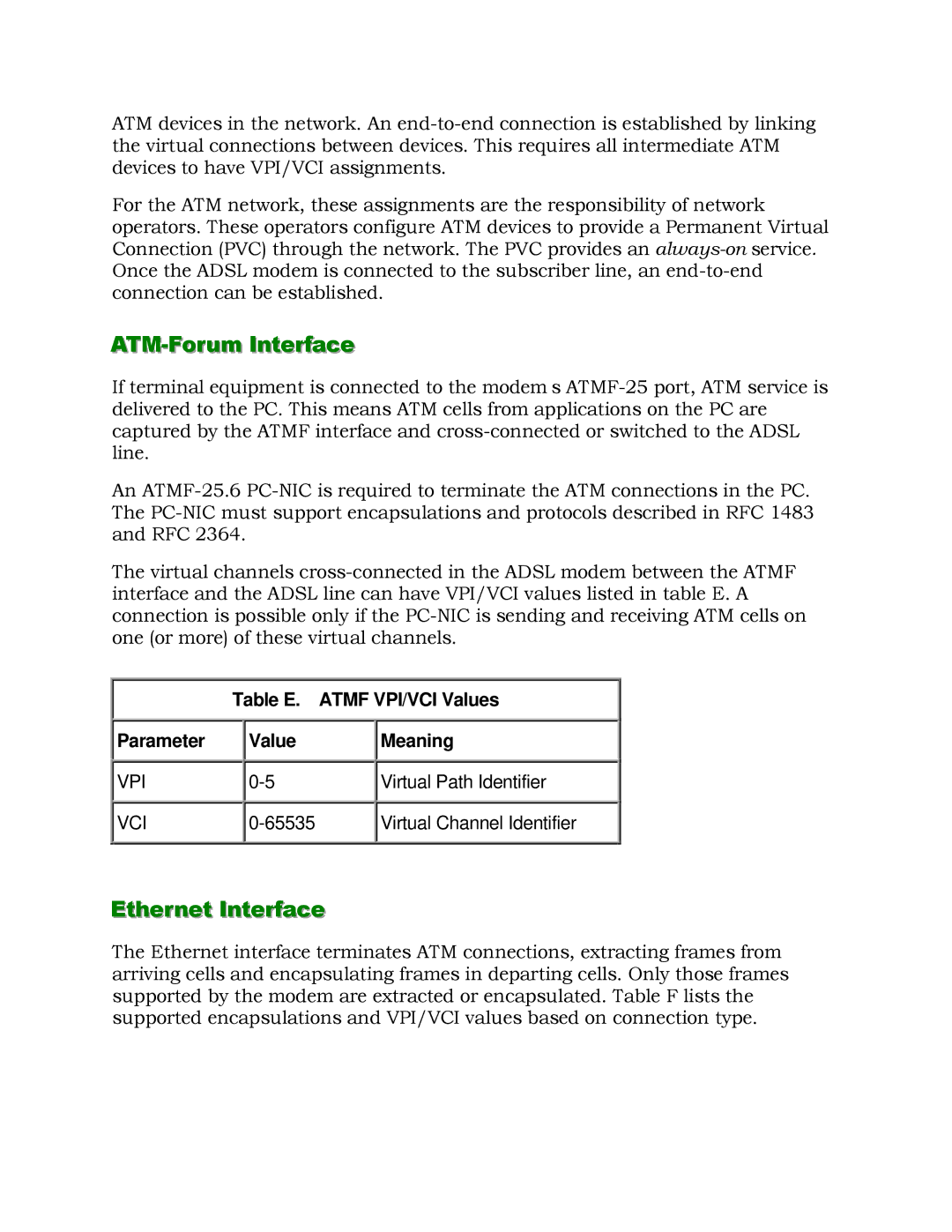ATM devices in the network. An end-to-end connection is established by linking the virtual connections between devices. This requires all intermediate ATM devices to have VPI/VCI assignments.
For the ATM network, these assignments are the responsibility of network operators. These operators configure ATM devices to provide a Permanent Virtual Connection (PVC) through the network. The PVC provides an always-onservice. Once the ADSL modem is connected to the subscriber line, an end-to-end connection can be established.
ATM-Forum Interface
If terminal equipment is connected to the modem’s ATMF-25 port, ATM service is delivered to the PC. This means ATM cells from applications on the PC are captured by the ATMF interface and cross-connected or switched to the ADSL line.
An ATMF-25.6 PC-NIC is required to terminate the ATM connections in the PC. The PC-NIC must support encapsulations and protocols described in RFC 1483 and RFC 2364.
The virtual channels cross-connected in the ADSL modem between the ATMF interface and the ADSL line can have VPI/VCI values listed in table E. A connection is possible only if the PC-NIC is sending and receiving ATM cells on one (or more) of these virtual channels.
Table E. ATMF VPI/VCI Values
| Parameter | Value | Meaning |
| | | |
| VPI | 0-5 | Virtual Path Identifier |
| | | |
| VCI | 0-65535 | Virtual Channel Identifier |
| | | |
| | | |
Ethernet Interface
The Ethernet interface terminates ATM connections, extracting frames from arriving cells and encapsulating frames in departing cells. Only those frames supported by the modem are extracted or encapsulated. Table F lists the supported encapsulations and VPI/VCI values based on connection type.

